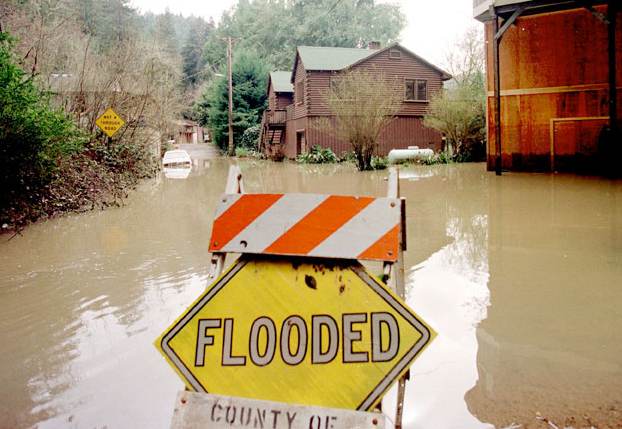Moody’s RMS estimates insured losses from California floods at up to $1.5bn

Moody’s RMS, the catastrophe risk modelling specialist, has estimated that the recent severe flooding in California, that was triggered by a spate of storms and atmospheric river events, could amount to as much as $1.5 billion in losses for the insurance industry.
Overall economic losses from the flooding in California are estimated at between $5 billion and $7 billion.
On that basis, Moody’s RMS says insurance market losses could be from $500 million to as much as $1.5 billion, including claims to the National Flood Insurance Program (NFIP), as well as private flood insurance.
The estimate reflects inland flood impacts for the U.S. and includes damage to infrastructure, Moody’s RMS said.
While the economic loss estimate includes property damage, contents, and business interruption, across residential, commercial, industrial, automobile and infrastructure assets.
The flooding was driven by a series of extratropical cyclone storms, beginning December 26th 2022, driving heavy rainfall, overtopped rivers, flash floods, levee breaches, mudslides, fallen trees, debris flow, and heavy snow at high altitudes, together with some wind damage.
Moody’s RMS notes that the rainfall from with these extratropical cyclones was exacerbated by a atmospheric water vapor, also known as an ‘atmospheric river’.
Several locations in central California set 3-week record rainfall records, while a number of locations saw their annual average rainfall totals in less than one month.
“To put this event in historical perspective with the 1862 ARkstorm, although some impacted areas are similar, the ARkstorm produced much more severe precipitation, for example, 35 inches (88.9 centimeters) of precipitation in San Francisco compared to ~ 15 inches (38 centimeters) from this event. Another important mitigating factor for this event is the presence of flood defenses, which were mostly absent in 1862,” Mohsen Rahnama, Chief Risk Modeling Officer, Moody’s RMS explained.
The risk modeller anticipates a relatively small proportion of the economic damage to be covered by insurance.
There is less than 2% flood insurance penetration in California, a number the risk modeller says has been declining steadily.
As of August 2022, there were only 193,281 residential National Flood Insurance Program (NFIP) policies in place, which is down roughly 5% on 2021
Firas Saleh, Director, Product Management, Moody’s RMS, added, “Extreme drought leads to soil compaction which means less infiltration and more runoff, hence less aquifer recharge and higher risk of flooding. Nowhere is safe from flooding in California today. If we’ve learned anything from this extreme rainfall and subsequent damage, it’s that even perceived low-risk flood zones are still flood zones. If it rains, it can overflow.”






